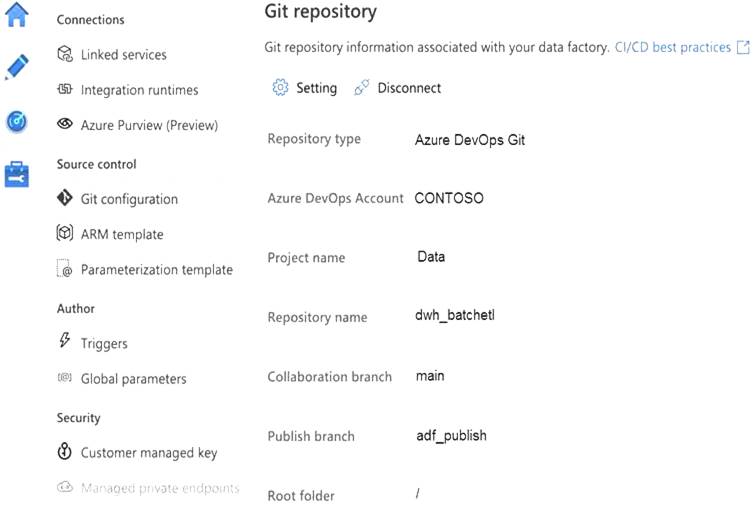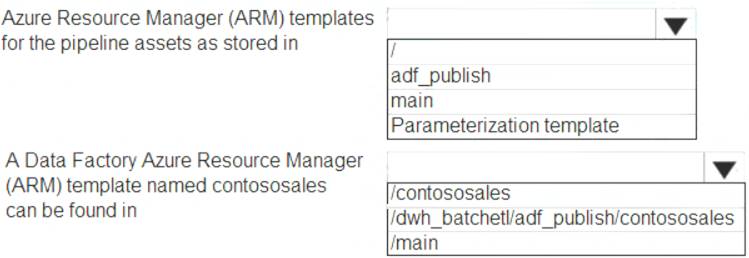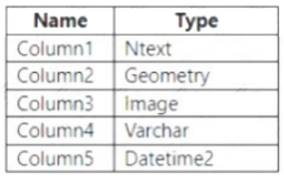- (Exam Topic 5)
You have an Azure virtual machine named VM1 on a virtual network named VNet1. Outbound traffic from VM1 to the internet is blocked.
You have an Azure SQL database named SqlDb1 on a logical server named SqlSrv1.
You need to implement connectivity between VM1 and SqlDb1 to meet the following requirements:  Ensure that VM1 cannot connect to any Azure SQL Server other than SqlSrv1.
Ensure that VM1 cannot connect to any Azure SQL Server other than SqlSrv1. Restrict network connectivity to SqlSrv1. What should you create on VNet1?
Restrict network connectivity to SqlSrv1. What should you create on VNet1?
Correct Answer:
C
A private endpoint is a network interface that uses a private IP address from your virtual network. This network interface connects you privately and securely to a service powered by Azure Private Link. By enabling a private endpoint, you're bringing the service into your virtual network.
The service could be an Azure service such as:  Azure Storage
Azure Storage Azure Cosmos DB
Azure Cosmos DB  Azure SQL Database
Azure SQL Database Your own service using a Private Link Service. Reference:
Your own service using a Private Link Service. Reference:
https://docs.microsoft.com/en-us/azure/private-link/private-endpoint-overview
- (Exam Topic 5)
You plan to move two 100-GB databases to Azure.
You need to dynamically scale resources consumption based on workloads. The solution must minimize downtime during scaling operations.
What should you use?
Correct Answer:
A
Azure SQL Database elastic pools are a simple, cost-effective solution for managing and scaling multiple databases that have varying and unpredictable usage demands. The databases in an elastic pool are on a single server and share a set number of resources at a set price.
Reference:
https://docs.microsoft.com/en-us/azure/azure-sql/database/elastic-pool-overview
- (Exam Topic 5)
You configure version control for an Azure Data Factory instance as shown in the following exhibit.
Use the drop-down menus to select the answer choice that completes each statement based on the information presented in the graphic.
NOTE:Each correct selection is worth one point.
Solution:
Graphical user interface, text, application Description automatically generated
Box 1: adf_publish
By default, data factory generates the Resource Manager templates of the published factory and saves them into a branch called adf_publish. To configure a custom publish branch, add a publish_config.json file to the root folder in the collaboration branch. When publishing, ADF reads this file, looks for the field publishBranch, and saves all Resource Manager templates to the specified location. If the branch doesn't exist, data factory will automatically create it. And example of what this file looks like is below:
{
"publishBranch": "factory/adf_publish"
}
Box 2: /dwh_barchlet/ adf_publish/contososales
RepositoryName: Your Azure Repos code repository name. Azure Repos projects contain Git repositories to manage your source code as your project grows. You can create a new repository or use an existing repository that's already in your project.
Reference:
https://docs.microsoft.com/en-us/azure/data-factory/source-control
Does this meet the goal?
Correct Answer:
A
- (Exam Topic 5)
You have an on-premises Microsoft SQL Server 2019 server that hosts a database named DB1.
You have an Azure subscription that contains an Azure SQL managed instance named SQLMI1 and a virtual network named VNET1. SQLMI1 resides on VNET1. The on-premises network connects to VNET1 by using an ExpressRoute connection.
You plan to migrate DB1 to SQLMI1 by using Azure Database Migration Service. You need to configure VNET1 to support the migration.
What should you do?
Correct Answer:
A
Reference:
https://docs.microsoft.com/en-us/azure/dms/tutorial-sql-server-to-managed-instance
- (Exam Topic 5)
You have an Azure SQL database named DB1. DB1 has a table named Table1 that contains the following columns.
You plan to enable Always Encrypted for Table1.
Which two columns support encryption? Each correct answer presents a complete solution. NOTE: Each correct selection is worth one point
Correct Answer:
AD

